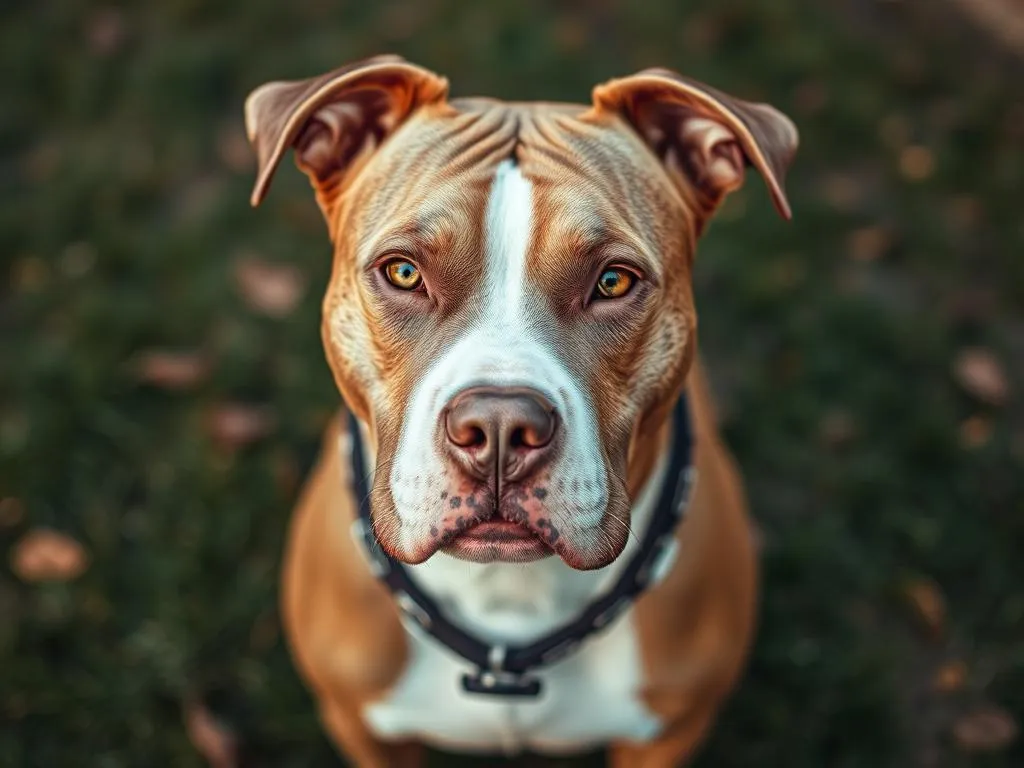
Introduction
Pit bull discrimination refers to the unjust and often unfounded negative attitudes and beliefs directed toward pit bull breeds, which include American Pit Bull Terriers, American Staffordshire Terriers, and Staffordshire Bull Terriers. This discrimination manifests in various ways, from breed-specific legislation (BSL) to social stigma, leading to severe consequences for both the dogs and their owners.
Historically, pit bulls were celebrated as loyal companions, farm helpers, and family pets. However, a shift in public perception has contributed to a growing stigma against them. The rise of sensationalized media coverage of dog attacks has fueled misconceptions, resulting in widespread fear and misunderstanding. The purpose of this article is to explore the roots of pit bull discrimination, its impact, and potential solutions to promote understanding and compassion for these often-misunderstood dogs.
The History of Pit Bull Discrimination
Early Perceptions of Pit Bulls
Pit bulls have a rich history that dates back to the 19th century. Originally bred for bull-baiting, they were later utilized as farm dogs, capable of herding livestock and guarding properties. They were also known for their gentle nature, often serving as family pets and even “nanny dogs” for children. These early perceptions painted pit bulls as loyal, loving companions.
The Shift in Public Perception
In the late 20th century, significant events dramatically altered the perception of pit bulls. High-profile incidents involving dog attacks, often sensationalized in the media, contributed to a growing fear of the breed. The media’s role in amplifying these events cannot be understated; studies have shown that news coverage often highlights the breed of the dog involved, leading to a skewed understanding of their behavior.
Breed-Specific Legislation
In response to the rising concerns about dog attacks, many cities and states implemented breed-specific legislation (BSL). This legislation aims to restrict or ban ownership of certain breeds perceived as dangerous, including pit bulls. Examples of such legislation can be found in cities like Denver, Colorado, and Miami, Florida, which have imposed bans on pit bull ownership. Unfortunately, these laws have had adverse consequences, such as increased euthanasia rates in shelters and a rise in underground breeding practices, ultimately failing to improve public safety.
The Impact of Discrimination on Pit Bulls
Psychological Effects on Dogs
Discrimination against pit bulls can have significant psychological effects on the dogs themselves. When raised in an environment that perpetuates fear and misunderstanding, pit bulls may develop behavioral issues. It is crucial to recognize that a dog’s behavior is often a reflection of its environment, training, and socialization rather than the breed itself. Proper training and a loving home can help mitigate these issues.
Consequences for Owners
Owners of pit bulls face unique challenges as a result of discrimination. Many experience legal repercussions, including fines and confiscation of their pets due to BSL. The emotional toll can be immense, as owners often find themselves defending their beloved pets against societal stigma. This social stigma can lead to isolation and anxiety for both the owner and the dog.
Public Safety Myths
The belief that pit bulls are inherently dangerous is not supported by facts. Statistics from various studies indicate that pit bulls do not have a higher propensity for aggression than other breeds. In fact, many studies show that other breeds, such as Chihuahuas and Dachshunds, are involved in more attacks proportionately. Discrimination against pit bulls often overlooks these facts, perpetuating myths that contribute to their negative image.
The Role of Media in Shaping Perceptions
Media Portrayal of Pit Bulls
The media plays a pivotal role in shaping public perceptions of pit bulls. Coverage of dog attacks often emphasizes the breed of the dog involved, leading to a disproportionate association between pit bulls and violence. Analyzing the portrayal of pit bulls in news articles can reveal a pattern of sensationalism that reinforces negative stereotypes. High-profile incidents, such as attacks by pit bulls, receive extensive coverage, while positive stories about pit bulls are frequently overlooked.
Social Media and Viral Content
In the age of social media, misinformation spreads rapidly. Viral posts often depict pit bulls in a negative light, reinforcing harmful stereotypes. Memes, videos, and stories that showcase pit bulls as aggressive or dangerous contribute to the ongoing pit bull discrimination narrative. The immediacy of social media allows misinformation to circulate widely, making it essential for advocates to counteract these narratives with positive messaging.
Counteracting Negative Media
Despite the challenges posed by negative media portrayals, there are numerous initiatives aimed at changing the narrative surrounding pit bulls. Positive stories highlighting pit bulls as loving, loyal companions are increasingly shared on social platforms. Influencers and activists dedicated to advocating for pit bulls play a crucial role in reshaping public perception, showcasing the breed’s potential as family pets and therapy animals.
Advocacy and Education
Organizations Fighting Discrimination
Several organizations are dedicated to combating pit bull discrimination and promoting responsible ownership. Organizations such as Best Friends Animal Society and The Pit Bull Project focus on advocacy, education, and rescue efforts aimed at improving the lives of pit bulls. Their missions often include promoting breed-neutral legislation and providing resources for responsible pet ownership.
Community Education Programs
Education is a vital tool in changing perceptions of pit bulls. Community outreach programs that focus on responsible pet ownership and the importance of understanding dog behavior can help dispel myths. Successful initiatives, such as local workshops and educational seminars, have shown promise in fostering understanding between pit bull owners and the general public.
Responsible Ownership and Training
For pit bull owners, promoting responsible ownership is key to counteracting discrimination. Socialization and training are essential components of raising a well-adjusted dog. Owners should seek out positive reinforcement training methods and participate in community training classes. Educating oneself about canine behavior and responsible ownership can not only improve the dog’s behavior but also help combat societal myths.
Finding Solutions to Discrimination
Legislative Changes
The repeal of breed-specific legislation in favor of breed-neutral policies is a crucial step toward ending pit bull discrimination. Advocates argue for more effective animal control laws that focus on responsible ownership rather than targeting specific breeds. Legislative reforms aimed at promoting education and awareness can lead to a more informed public and safer communities.
Public Engagement Strategies
Community engagement is essential in fostering understanding and compassion for pit bulls. Events such as “Pit Bull Days” or responsible pet ownership workshops can encourage positive interactions between pit bulls and the community. Engaging local leaders and lawmakers in discussions about the benefits of breed-neutral policies can also help shift public perception.
Building a Supportive Network
Local shelters and rescue organizations play a vital role in promoting positive narratives about pit bulls. By creating support groups for pit bull owners, these organizations can provide a platform for sharing experiences and strategies for advocating against discrimination. Building a network of supportive individuals can help combat the emotional toll that comes with owning a breed often subjected to stigma.
Conclusion
In summary, pit bull discrimination stems from a complex interplay of historical perceptions, media portrayals, and legislative actions. The impact of this discrimination is felt not only by the dogs themselves but also by their owners and the broader community. To combat this stigma, it is essential to advocate for legislative changes, promote responsible ownership, and engage in community education.
By fostering understanding and compassion, we can work together to create a society that values all dogs, regardless of breed. As we continue to challenge the misconceptions surrounding pit bulls, we open the door for a brighter future for these loving and loyal companions.









